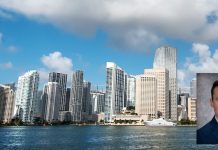 There seems to be a trend taking shape and it’s worrisome.
There seems to be a trend taking shape and it’s worrisome.
In the last 6 months I’ve been contacted 5 times to evaluate the risk being posed by tree branches and palm fronds overhanging, or in close proximity to, the roof of a house. In each case the calls were prompted by a letter the home owner received from their insurance company. In four of the cases the letters instructed home owners to have tree branches removed and in one case it was requesting all palm fronds be removed from one side of each, of two royal palms. What’s interesting about this is, in every case, if what the insurance company was requesting had been complied with the trees and the palms would have posed an increase in risk, rather than less of a risk.
As a Certified Arborist, I have no more business telling a customer how to make decisions about what kind of insurance they should have than an insurance company has requiring a customer to trim trees and palms to their liking.
If the idea is to reduce risk and decrease the insurer’s liability than they might as well require the tree be removed. Trees pose a risk. Mature trees that have been neglected typically have dense canopies that create a “sail” effect and are the most likely to fail against storm force winds, blowing over and damaging a home or other property.
Healthy and properly maintained trees pose a minimum of risk to the property. In order to be a healthy tree, a tree needs pruning, thinning and removal of dead wood to maintain a proper branching structure. Branches are needed for a dampening effect during high wind events.
Any tree that is tall enough to have branches overhanging a single story roof is certainly a fairly mature tree. Removing healthy lower branches can result in a “top heavy” tree. Removing any healthy branch can affect the structural integrity of the tree and result in large wounds that increase the tree’s susceptibility to damaging decay, pest and disease.
University of Florida has done extensive research on the impact of hurricanes on urban trees. One study had the goal of determining, what makes a tree more wind resistant? Among many of the lessons learned was, trees that had been pruned properly survived better and sustained less damage than poorly pruned or unpruned trees. In fact, more trees fail in hurricanes due to poorly drained soils, compacted soils, compromised root systems and numerous other factors that have to do with trees not having proper anchoring, rather than some branches overhanging the roof!
A certified arborist is trained to evaluate and make decisions about the risk presented by trees and how branches can be pruned instead of removed. Many options exist. Descending branchlets can be removed from a primary branch. A branch with heavy end-weight can be “thinned”. Crossing or rubbing branches can be trimmed or may even warrant removal. Trust the experts, call an arborist!







Comments are closed.